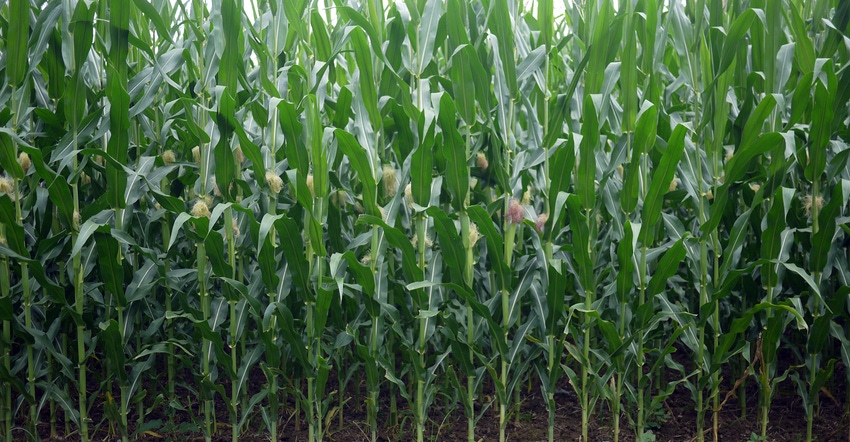August 5, 2021

The discovery of a gene that regulates the angle of root growth in corn is a new tool that could enable the breeding of deeper-rooting crops with enhanced ability to take up nitrogen.
An international team of researchers led by Penn State identified the gene, ZmCIPK15 — a moniker indicating where it is in the genome and how it functions. The gene was found to be missing in a naturally occurring mutant corn line that grew roots at steeper angles, making them go deeper into the soil.
They identified the gene using a technique called genome-wide association study, which involves a painstaking statistical analysis of a genome-wide set of genetic variants in different plant lines to see what genes are associated with a trait.
Identifying a gene that controls the angle of root growth in corn is important because deeper roots have a greater ability to capture nitrogen, says Jonathan Lynch, a distinguished professor in Penn State’s College of Agricultural Sciences.
Corn with an enhanced ability to take up nitrogen has implications for the world’s environment, economy and food security, he says.
“Corn is the most important crop in the world. In rich countries like the U.S., the biggest energy, economic and environmental cost of growing corn is nitrogen fertilizer,” Lynch says. “And more than half of the nitrogen fertilizer applied to corn is never even taken up. It's just wasted, washed deeper into the soil where it pollutes groundwater, and some of it goes into the atmosphere as the greenhouse gas nitrous oxide. It's a massive problem.”
In regions such as Africa where people are more dependent on corn for food, soils are nitrogen deficient and farmers can’t afford to buy fertilizer, if it even is available, Lynch adds. Corn yields in Africa are only a fraction of what they are in the U.S.
Deeper-rooting corn would help poor countries harvest more food with the limited amount of nitrogen that they have.
The process
To find the gene that regulates the angle of roots, researchers at Penn State screened nearly 500 lines of corn over four years in South Africa. Field experiments at Penn State’s Russell E. Larson Agricultural Research Center, as well as greenhouse experiments at University Park, were conducted to confirm the phenotype of the mutant and wild-type plants, and to test the functional utility of changes in root angle for nitrogen capture.
Roots of selected plants were excavated and measured, validating the functional importance of the ZmCIPK15 gene. It caused an approximate 10-degree change in root angle, notes Hannah Schneider, former postdoctoral scholar in the Lynch lab and a faculty member at Wageningen University in the Netherlands. Schneider spearheaded the research.
“Along with enhanced deep nitrogen acquisition, we expected to see that the steeper growth angle of CIPK15 mutants’ roots would result in better performance in drought, but in our experiments, it did not translate to improved plant water status,” she says. “However, that only may be because we have difficulty simulating drought conditions in Pennsylvania.”
In the findings, recently published in Plant, Cell and Environment, the researchers found that a steeper root growth angle markedly improved nitrogen capture. In field studies under suboptimal nitrogen availability, the CIPK15 mutant with steeper growth angles had 18% greater shoot biomass and 29% greater shoot nitrogen accumulation compared to the wild type, after 70 days of growth.
Unexpected results
The results were eye-opening, Lynch points out, admitting that he was surprised by the outcome. It's quite unusual when you knock something out that the plant gets better, he says, because plants are like finely tuned machines.
“You take a gene out of that finely tuned machine, you don't expect it to work better, but this shows that if you knock out the single gene, you'll get deeper roots and better nitrogen capture,” he says. “For America, here's a way to reduce a major cost and environmental impact from corn production.
“For Africa, this discovery could result in higher corn yields that will reduce food insecurity. And this discovery may support the discovery of genes regulating steeper root angles for other cereal plants, especially those closely related to corn, like sorghum and pearl millet.”
This research was supported by the Howard G. Buffet Foundation, the U.S. Department of Energy and USDA’s National Institute of Food and Agriculture.
Source: Penn State University, which is solely responsible for the information provided and is wholly owned by the source. Informa Business Media and all its subsidiaries are not responsible for any of the content contained in this information asset.
You May Also Like




